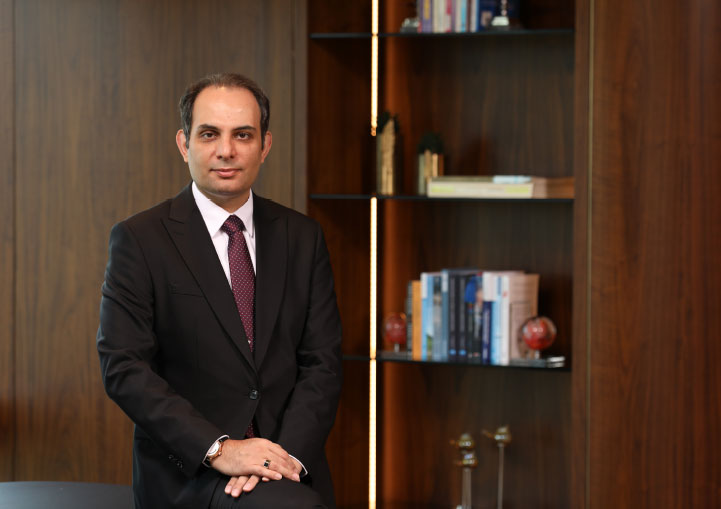


Mehmet Keyvan CEO & Chairman, KEYVAN Aviation
At the first look at the NETZERO goal, we need to review the goal plan and timeline. The history of NETZERO's goal and strategy is back to the 66th IATA AGM in 2010, IATA member airlines adopted a resolution that endorsed three ambitious goals to address aviation’s carbon emissions, intending to improve the fuel efficiency of 1.5% per year started from 2010 until 2020. and a reduction in net aviation carbon emissions of 50% by 2050 compared to 2005 levels. The global carbon dioxide emissions from aviation were approximately 250 million tonnes in 1966, almost doubled in 1990 and after slowing down during the 2008 financial crisis jumped to 1.04 billion tonnes in 2018. During the 77th IATA Annual General Meeting held in Boston, on October 2021, a resolution presented by IATA to member airlines committing to plan for achieving net-zero carbon emissions from flight operations by a deadline of 2050. This commitment aligned with the Paris Agreement goal for global warming not to exceed 1.5°C. Based on the final plan published during the 77th IATA Annual General Meeting (AGM), the industry in 2050 requires the mitigation of 1.8 gigatons of carbon. The strategy includes with 65% achieved through sustainable aviation fuels. 13% achieved through innovative propulsion technology, such as hydrogen, and electrical systems. 3% offered for efficiency improvements and the remaining 11% through carbon capture and storage and 8% offsets. With reference to the IATA reports member Airlines have achieved an average annual improvement in fuel efficiency of 2%, and a cumulative improvement of 21.4%, between 2009 and 2019.
The importance of fuel-producing companies to offer Sustainable Aviation Fuel (SAF) to the market, Air Navigation Service Providers (ANSPs) for better airspace infrastructure and procedures designs, Aircraft and Engine manufacturers for new and efficient airframe design and technologies and Airport operators were highlighted in the IATA Strategy plan. The roadmap millstone divided into five years periods. 2025 is set to achieve SAF production equal to 2% of the total worldwide aviation fuel requirement which might be around 7.9 billion liters. 2030 is set for increasing the SAF production by up to 5.2% of the total worldwide aviation fuel requirement equal to 23 billion liters and ANSPs required to improve airspace capacity and implement the ICAO Aviation block upgrade. The expectation for 2035 included new technology airplanes and systems included with hydrogen and electric options and also SAF production of up to 17% of total global needs equal to 91 billion liters. 2040 and 2045 are planned to increase SAF production to 229 billion litters and 346 billion litters, together with the improvement of Hydrogen aircraft from 90 minutes flights to 120 minutes, and finally in 2050 reaching 449 billion litters of SAF production equal to the expectation of 65% global aviation fuel needs.
The biggest challenges currently are SAF's limited production, cost, feedstock, and accessibility. While fuel-producing companies put all effort to make sure about production capacity increases, certain airlines around the world started to partner with fuel-producing companies to invest in some JV production projects. Unlike traditional aviation fuel (JET A-1), The process of production of the alternative SAF fuel requires feedstock, and not every feedstock is considered sustainable, As a result, Concerns regarding the ability to deliver enough feedstock for SAF have already been raised significantly. Also, due to limited supply chain and demand rising continuously from air operators, SAF remains expensive. The total number of airports listed in the world is around 27,000 including small
airport which may never offer SAF solutions to the customers, but the current airport offering SAF solutions as of 2023 is less than 0.01% of all the active airport around the world. Concerning the yearly growth rate of global carbon dioxide emissions from the aviation sector waiting for new technology such as hydrogen, and electrical systems which required authority approvals and safety and quality test until 2035 is not looking like a suitable solution and some prompt action required to start reducing the aviation effect in the global environments. I believe that an important missing ring from the sustainability chain is using the power of the available data to improve operations. There are lots of different data layers available through airlines' normal daily operations which could feed into a powerful AI system and generate very useful and interesting results. Infrastructure data like airport ground mapping and moving plans, terrains and obstacles data, flight procedures and airspace routes and data, restrictions and weather data, and movement and flight data covered by ground and satellite systems could use for this reason. Taking advantage of analysing this data to improve the operation and at the same time generate reports and suggestions to reduce flight time and fuel consumption could support air operators to achieve a daily goal of reducing the aviation effect in the global environment. If using data analytic could help airlines to reduce simply 1 minutes from aircraft taxi time per flight , for an airport with 1,000 flight transaction per day, a saving result of total 1,000 minutes equal to 23,000 litters of traditional jet fuel per day equal to 30,000 minutes and 690,000 litters of fuel per month would be easily achieved